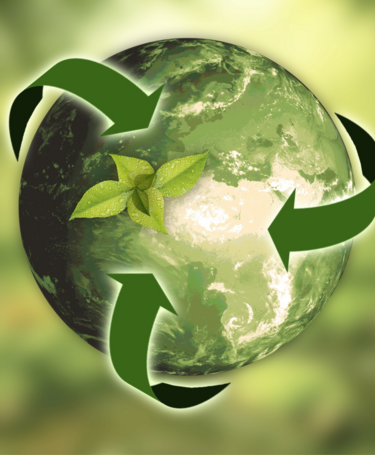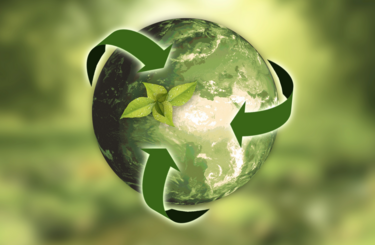
Life cycle of ISO 14001:2015

According to the CQI Workforce Insights 2021-22 research, 22% of quality and audit professionals have roles or responsibilities for environmental management. Sustainable development goals should form a key part of the business process, says IRCA Principal Auditor Ravindiran Gurusamy, as he examines the lifecycle perspective of ISO 14001 and its importance in achieving sustainable development goals.
In the present atmosphere of competition and increasingly stringent legislation, with growing pressure on the environment from pollution, inefficient use of resources, improper waste management and climate change, every organisation should adopt sustainable development in their business process.
Sustainable development as a goal is achieved by balancing the three pillars of sustainability – environment, society and the economy. Many organisations have already implemented environmental management systems, with the aim of contributing to the environmental pillar of sustainability.
Here, we will look at how the life cycle perspective can be considered in organisations’ environmental management system, and how it helps in establishing environmental objectives.
Successful consideration of the life cycle perspective in an environmental management system depends on commitment from all levels and functions of the organisation.
Perspective and assessment
Consecutive and interlinked stages of a product or service system, from raw material acquisition or generation from natural resources to final disposal, is a life cycle, according to section 3.3 of ISO 14001:2015 Environmental management systems – Requirements with guidance for use.
Life cycle perspective is a systematic overview through which the shifting of a potential environmental burden between life cycle stages or individual processes can be identified and possibly avoided. Life cycle assessment is the process of compilation and evaluation of the inputs, outputs and potential environmental impacts of a product or service system throughout its life cycle, and creates options for contributing to sustainable development. Each organisation must think about the life cycle perspective when determining the aspects and associated impacts.
Life cycle stages
Each product or service will have the following life cycle stages, although there may be more:
- Design and development.
- Raw material acquisition.
- Manufacturing operations.
- Transportation, both inward and outward.
- Use of products or services by customers.
- Final disposal after the end of life etc.
Determining life cycle perspective in identifying environmental aspects for each of the above stages will help minimise or avoid associated negative environmental impacts and motivate positive impacts.
The life cycle perspective of each of the stages outlined above can be identified as follows – although, again, they are not limited to only those given.
Life cycle stage |
Life cycle perspective |
|
Design and development |
Restriction of hazardous substances, registration, evaluation, authorisation and restriction of chemicals (REACH) compliance, minimum material usage, maximum usage of recyclable materials, cost-effective materials, meeting Apex bodies and other regulatory requirements. |
|
Raw material acquisition |
Minimising the generation of pollutants, pollution control, pollution prevention, weight reduction, adopting the principles of elimination, substitution and engineering control. |
|
Manufacturing |
Usage of renewable energy, energy efficient processes and environment, maximum possible usage of gravitational force, reduce, recycling, reuse, waste heat recovery, minimising the generation of pollutants, pollution control, pollution prevention, adopting the principles of elimination, substitution and engineering control. Waste water treatment, hazardous waste reduction. |
|
Transportation |
Reverse logistics, milk run system, hub and spoke model, complying statutory and regulatory requirements, emission testing on the vehicles, close proximity of the external providers to reduce transport costs and emissions. Reducing packaging wood, metal stillages, multi-layer racks. |
|
Customer use |
Using the product/service and disposal as per manufacturer’s recommendations. |
|
Final disposal |
Buyback option, recycling, disposal of non-recyclable material as per statutory and regulatory guidelines. |
Benefits of life cycle perspective
Considering life cycle perspective at each stage can facilitate or support an organisation in meeting one or more sustainable development environmental goals (SDEG) or environmental objectives.
SDEG |
Benefits through life cycle perspective |
|
Energy |
Specific consumption reduction, conservation, green building. |
|
Water |
Specific water consumption reduction, waste water treatment , reuse, zero liquid discharge, water positive. |
|
Waste |
Specific generation of waste reduction, recycling and reuse, reduced carbon footprint. |
|
Renewables |
Migration to solar applications, translucent roofing, wind turbine generators. |
|
Greenhouse gas emissions |
Greenhouse gas inventory, reduction in absolute values, tree plantation. |
|
Green purchase policy |
Adaption to number of parts/suppliers, ‘greening’ the supply chain. |
|
Harvesting rainwater |
Increase the share of rainwater usage, artificial recharge structures, efforts to preserve hydrological cycle. |
|
Recyclables |
Increased use in product, green buildings, waste heat recovery. |
|
Product stewardship |
Intellectual propery rules projects, green manufacturing process. |
|
Biodiversity |
Biodiversity, species diversity, trees diversity, land-use diversity, projects on biodiversity conservation. |
|
Corporate social responsibility |
Number of community projects, inclusiveness of stakeholders, restoration and maintaining of water bodies, developing dense forests. |
Successful consideration of the life cycle perspective in an environmental management system depends on commitment from all levels and functions of the organisation. Systematic definition and management of different processes and their interactions can further strengthen the life cycle perspective. The organisation should review the document periodically or whenever changes in the process, product or system occur, by adopting the plan, do, check, act approach.
Discover the training that the CQI and IRCA have to offer, including ISO 14001:2015 Auditor Transition (EMS).